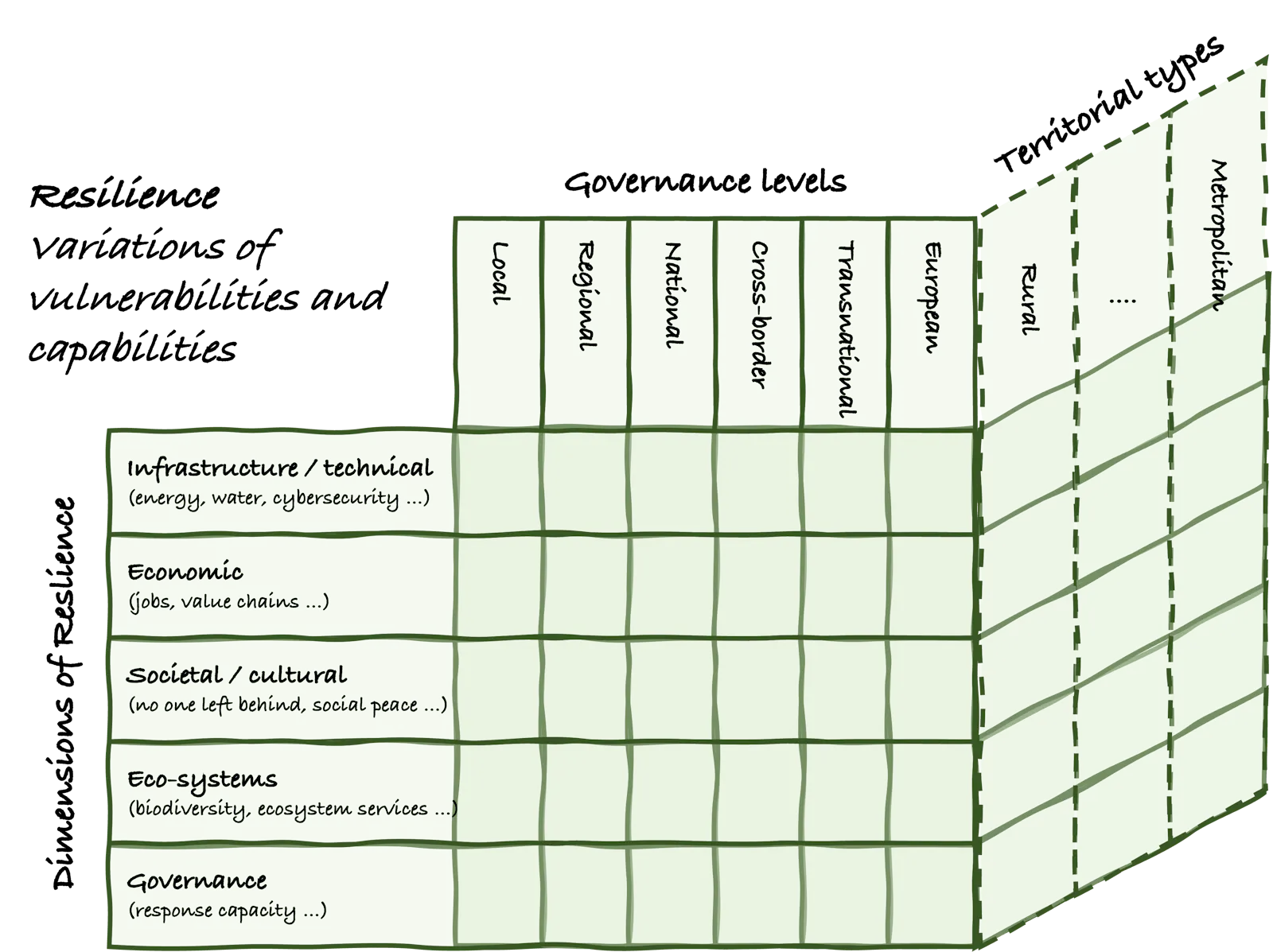Preparing for unexpected future events
April 2023
In today's rapidly changing world, it's increasingly important for to be prepared for unexpected disruptive events. These events could include natural disasters, economic downturns, wars, cyberattacks, social unrest or pandemics, and they can have significant and long-lasting impacts.
Realising that disruptive events are not just potential wild cards but may actually occur, has increased the talk about resilience. In the current debates, various types of resilience are mixed. To better understand different types of resilience and prepare for unexpected future events, it might be worthwhile to differentiate a few types of resilience.
The ‘Resilience Hypercube’
A place’s resilience to external shocks, but also global trends and societal transitions depends on a variety of vulnerabilities and capabilities. These variations are related to different dimensions of resilience, different governance levels and territorial types. We propose to bring these variations together in a ‘Resilience Hypercube’. It illustrates the multitude of facets of resilience and consequently also different approaches to prepare to unexpected future events.

The key point is: While many resilience debates start from certain types of disruptive events and see how to become more resilient to these. The ‘Resilience Hypercube’ looks at different types of vulnerabilities to disruptions – regardless which ones – and thus defines different dimension of resilience to be considered regardless the next type of disruption expected. Indeed, one of the main points of disruptive events, is that we often do not see them coming until it is too late.
To read this post you'll need to become a member. Members help us fund our work to ensure we can stick around long-term.
See our plans (Si apre in una nuova finestra)
Sei già un affiliato? Accedi (Si apre in una nuova finestra)


